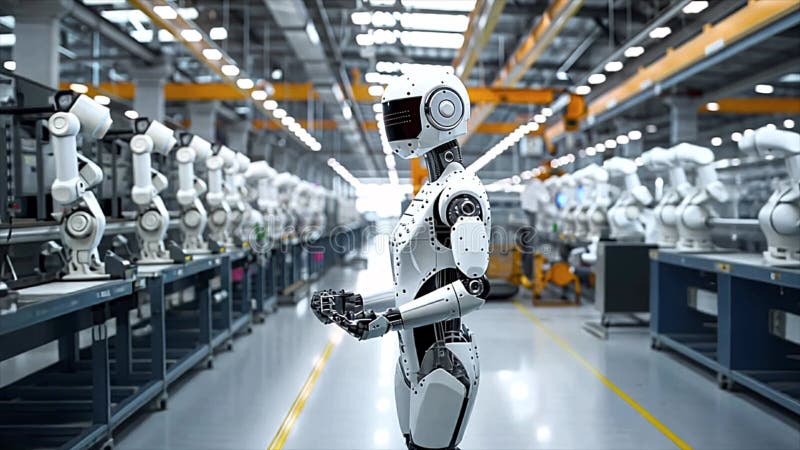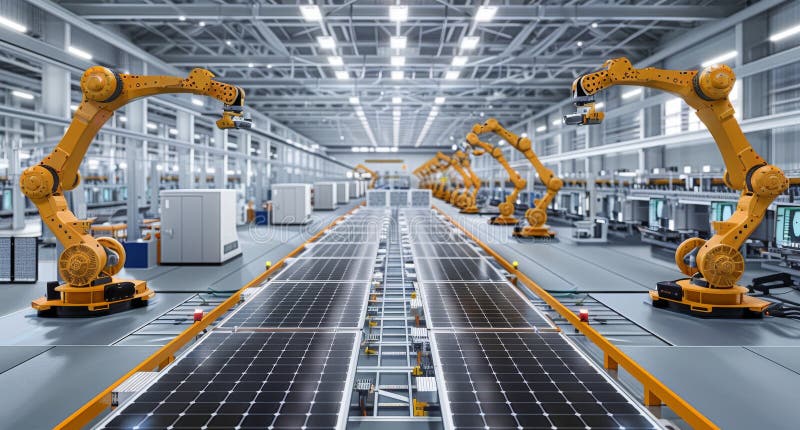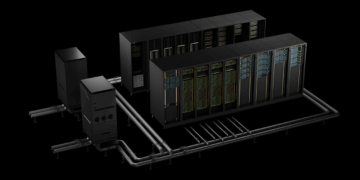In the dynamic era of Industry 4.0, advanced robotics is no longer just a futuristic concept—it has become a central force in transforming how industries operate. From manufacturing floors to smart warehouses, from autonomous vehicles to robotic surgeries, robotics plays a crucial role in automating complex processes with unmatched speed, precision, and intelligence.
The integration of robotics with artificial intelligence (AI), machine learning (ML), Internet of Things (IoT), and advanced sensors has accelerated the deployment of machines capable of mimicking and often surpassing human capabilities in specific tasks. As labor shortages, demand for efficiency, and the quest for cost reduction rise, companies across sectors are investing heavily in robotic automation.
This article explores the rise of advanced robotics, the technologies behind it, its real-world applications, industry impact, benefits, challenges, and what the future holds—crafted specifically for SEO optimization and AdSense monetization.
What Is Advanced Robotics?
Advanced robotics refers to robotic systems that are enhanced with modern technologies such as AI, real-time data processing, cloud computing, edge computing, and autonomous navigation. These robots go far beyond repetitive motions and pre-programmed tasks. They are capable of:
A. Perceiving their environment through sensors and cameras
B. Making decisions using AI and data analytics
C. Adapting to dynamic environments
D. Learning from previous experiences
E. Collaborating with humans and other machines
Unlike traditional industrial robots that require strict programming and operate in static environments, advanced robots can operate autonomously or semi-autonomously in unstructured, changing, or hazardous environments.
Key Technologies Enabling Advanced Robotics
Advanced robotics is not powered by robotics alone. It is the convergence of multiple cutting-edge technologies:
A. Artificial Intelligence (AI)
AI enables robots to process information, recognize objects, make decisions, and improve performance over time. AI also allows robots to interact naturally with humans.
B. Machine Learning (ML)
ML algorithms enable robots to learn from data, improve their algorithms autonomously, and adapt to new tasks without explicit programming.
C. Computer Vision
Using cameras and AI-based image processing, robots can understand their surroundings, detect objects, and navigate safely.
D. Sensors and Actuators
Advanced sensors detect light, pressure, temperature, sound, and proximity, while actuators convert these signals into precise mechanical movement.
E. Edge Computing
This reduces latency by processing data closer to the source, allowing faster responses and autonomous decision-making.
F. 5G and Connectivity
High-speed, low-latency networks allow real-time communication between robots, humans, and cloud systems.
G. Collaborative Software
Interfaces and programming tools enable easier integration and control over robotic systems in various environments.
Types of Advanced Robots

There are several classifications of advanced robots based on their capabilities and intended uses:
A. Industrial Robots
These include robotic arms used in assembly, welding, painting, and packaging across automotive and electronics industries.
B. Collaborative Robots (Cobots)
Cobots work safely alongside humans, assisting with tasks that require flexibility and teamwork without safety cages.
C. Service Robots
Used in healthcare, hospitality, and domestic applications—e.g., robot nurses, delivery bots, and cleaning robots.
D. Autonomous Mobile Robots (AMRs)
These robots navigate environments independently using LiDAR, vision, and AI—commonly used in logistics and warehousing.
E. Humanoid Robots
Designed to resemble and interact like humans, they are used in customer service, education, and entertainment.
F. Surgical Robots
Used in minimally invasive surgery to increase precision, reduce recovery times, and enhance patient outcomes.
G. Agricultural Robots
Deployed for planting, spraying, harvesting, and soil monitoring, they optimize farming operations.
Real-World Applications Across Industries

Advanced robotics has proven transformative in a wide range of sectors:
1. Manufacturing and Assembly
-
Automate repetitive tasks with precision
-
Perform quality checks using machine vision
-
Increase throughput and reduce error rates
2. Logistics and Warehousing
-
Pick, sort, and pack items faster and more accurately
-
Navigate dynamic warehouse layouts using AMRs
-
Optimize inventory management in real-time
3. Healthcare
-
Conduct complex surgeries with robotic arms
-
Assist in elderly care through service robots
-
Perform sanitization tasks in hospitals
4. Agriculture
-
Analyze soil and crop health
-
Automate seeding, watering, and harvesting
-
Monitor weather and pest conditions autonomously
5. Retail and Hospitality
-
Robots greet customers and provide assistance
-
Deliver food and beverages in hotels
-
Manage inventory through shelf-scanning robots
6. Defense and Security
-
Autonomous drones for surveillance and reconnaissance
-
Bomb disposal and hazardous material handling
-
Robotic exoskeletons for enhanced soldier mobility
7. Construction
-
Robotic bricklaying and welding
-
Site surveying and progress tracking with drones
-
Enhancing worker safety in dangerous environments
Benefits of Advanced Robotics in Automation
A. Increased Productivity
Robots operate 24/7 without fatigue, drastically increasing output while maintaining high quality.
B. Cost Savings
Although initial investment is high, long-term cost reduction is achieved through fewer errors, lower waste, and reduced labor costs.
C. Improved Safety
Robots can perform hazardous tasks, reducing injury risks for human workers.
D. Consistency and Precision
Advanced robots perform repetitive tasks with identical results and minimal deviation.
E. Better Use of Human Talent
Humans can focus on creative, strategic, and supervisory roles while robots handle physical and routine jobs.
F. Rapid Scalability
Robots can be reprogrammed or reconfigured for new tasks, making it easier to scale operations.
G. Data-Driven Decision Making
Robots equipped with sensors and analytics generate useful operational insights to optimize workflows.
Challenges in Implementing Advanced Robotics
Despite the massive potential, deploying robotics comes with its own set of challenges:
A. High Initial Costs
Investment in robots, infrastructure, training, and software can be prohibitive for small businesses.
B. Technical Complexity
Advanced robotics requires integration of hardware, software, and connectivity, demanding high technical expertise.
C. Workforce Displacement
Concerns about job losses due to automation create resistance among employees and communities.
D. Cybersecurity Risks
Connected robots are vulnerable to hacking and data breaches, making cybersecurity essential.
E. Maintenance and Downtime
Robots require ongoing maintenance and can cause production delays if they fail.
F. Ethical and Legal Issues
AI-driven robots raise questions about accountability, privacy, and bias in decision-making.
Best Practices for Robotic Automation
A. Conduct a Needs Assessment
Understand which tasks or processes will benefit most from robotic automation.
B. Start Small
Begin with a pilot project and measure ROI before scaling across the organization.
C. Upskill Employees
Train staff to manage, supervise, and collaborate with robotic systems.
D. Ensure Cybersecurity
Implement strong security protocols for connected devices and systems.
E. Choose Scalable Solutions
Invest in modular robots and platforms that allow future upgrades.
F. Monitor and Optimize
Use data analytics to continuously improve robotic performance and efficiency.
Future Trends in Advanced Robotics
As the field evolves, several innovations are set to redefine the capabilities of robotics:
A. Swarm Robotics
Inspired by nature, robots will work in coordinated groups for tasks like search-and-rescue and large-scale construction.
B. Emotionally Intelligent Robots
Future robots will detect human emotions and respond empathetically, ideal for healthcare and customer service.
C. Quantum Computing Integration
Faster data processing will enhance robot decision-making and learning capabilities.
D. Soft Robotics
Made from flexible materials, soft robots will be safer and better suited for human interaction and medical uses.
E. Robotic-as-a-Service (RaaS)
Subscription-based models will make robotics more accessible to SMEs without heavy upfront investment.
F. Human-Robot Collaboration (HRC)
Machines and humans will work seamlessly side-by-side, sharing tasks and learning from one another.
Conclusion
Advanced robotics is more than a technological trend—it’s a fundamental shift in how industries function. By combining robotics with AI, data analytics, connectivity, and smart sensors, businesses can automate with intelligence, flexibility, and reliability.
The transition to automated environments powered by robots is already underway. Those who embrace this shift will not only gain a competitive edge but also unlock new opportunities for innovation, efficiency, and growth.
For entrepreneurs, engineers, and business leaders, now is the time to understand and adopt advanced robotics—because the future of automation has already begun.







